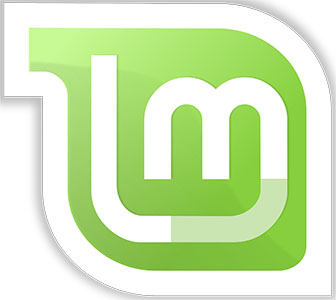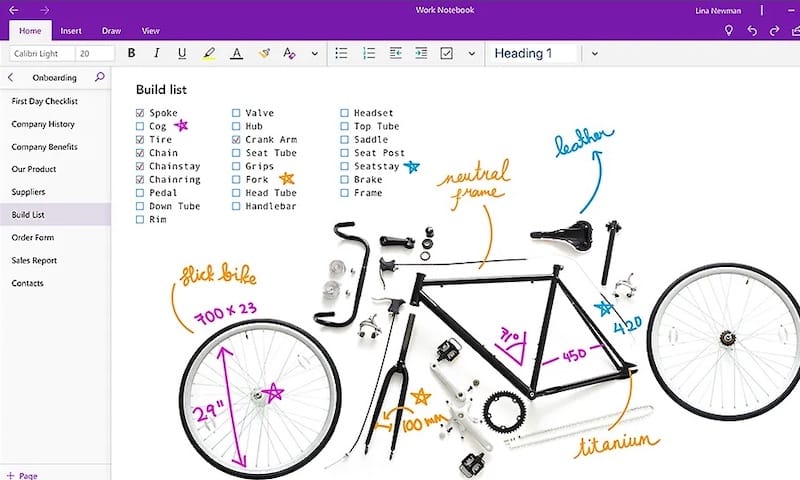How To Install OneNote on Linux Mint 22

Microsoft OneNote remains one of the most popular note-taking applications worldwide, offering robust features for organizing thoughts, creating digital notebooks, and collaborating with others. However, Microsoft doesn’t provide an official OneNote client for Linux distributions, leaving Linux Mint 22 users searching for viable alternatives. Fortunately, several reliable methods exist to install and run OneNote on Linux Mint 22, each with distinct advantages and installation processes.
This comprehensive guide explores multiple installation methods, from containerized Snap packages to portable AppImage solutions. Whether you’re a Linux newcomer or an experienced user, you’ll discover step-by-step instructions, troubleshooting tips, and performance comparisons to help you choose the best OneNote solution for your Linux Mint 22 system.
Prerequisites and System Requirements
Before beginning the OneNote installation process, ensure your Linux Mint 22 system meets the necessary requirements and has the proper dependencies installed.
Linux Mint 22 Compatibility Check
First, verify your Linux Mint 22 installation by checking the system version. Open a terminal and execute:
cat /etc/os-releaseYour system should display Linux Mint 22 (based on Ubuntu 24.04 LTS). Most OneNote solutions require a 64-bit architecture, which you can verify using:
uname -mThe output should show x86_64 for 64-bit systems. Minimum hardware specifications include 2GB RAM, 1GB free disk space, and a stable internet connection for synchronization features.
Required Dependencies
Ensure your system has essential packages installed. Update your package repositories and install fundamental dependencies:
sudo apt update
sudo apt upgrade
sudo apt install wget curl software-properties-commonAdministrative privileges through sudo access are required for most installation methods. Additionally, verify that your system supports either Snap packages or AppImage execution, depending on your chosen installation method.
Method 1: Installing OneNote via Snap Package
Snap packages provide containerized applications that work consistently across different Linux distributions. This method offers two primary OneNote options: P3X OneNote and OneNote Desktop.
Understanding Snap Packages
Snap technology creates isolated application environments, ensuring consistent behavior regardless of the underlying system configuration. Each snap package includes all necessary dependencies, reducing conflicts with existing system packages. The sandboxed environment also provides enhanced security by limiting application access to system resources.
Installing Snapd on Linux Mint 22
Linux Mint 22 doesn’t include snapd by default, requiring manual installation. Execute the following commands to install and configure snap support:
sudo apt update
sudo apt install snapd
sudo systemctl enable --now snapd.socketAfter installation, restart your system or reload the systemd daemon to ensure proper snap functionality:
sudo systemctl restart snapdVerify snapd installation by checking its status:
sudo systemctl status snapdInstalling P3X OneNote
P3X OneNote is an open-source application that provides comprehensive OneNote functionality on Linux systems. Install P3X OneNote using the following command:
sudo snap install p3x-onenoteThe installation process downloads approximately 150MB of data, depending on your internet connection speed. Monitor installation progress through terminal output. Once completed, launch P3X OneNote from the application menu or using:
p3x-onenoteThe first launch prompts for Microsoft account authentication. Enter your credentials to access existing OneNote notebooks and synchronize data across devices.
Installing OneNote Desktop Alternative
OneNote Desktop offers another snap-based solution, providing an Electron wrapper around the OneNote web application. Install OneNote Desktop using:
sudo snap install onenote-desktopThis package creates a dedicated desktop application that eliminates the need for keeping OneNote open in browser tabs. The Electron-based wrapper provides native-like integration with your Linux Mint 22 desktop environment while maintaining full OneNote functionality.
Launch OneNote Desktop from the applications menu or terminal:
onenote-desktop
Method 2: Using AppImage for Portable Installation
AppImage technology provides truly portable applications that run without traditional installation procedures. This method offers flexibility and ease of use, particularly for users who prefer not to modify their system packages.
Understanding AppImage Technology
AppImage packages contain complete applications with all dependencies bundled into a single executable file. These portable applications run on any Linux distribution without requiring installation or administrator privileges. AppImages offer several advantages: no system-wide changes, easy application removal, and the ability to run multiple versions simultaneously.
Downloading the Correct AppImage
Navigate to the P3X OneNote GitHub releases page to download the appropriate AppImage file. Alternatively, use wget to download directly:
cd ~/Downloads
wget https://github.com/patrikx3/onenote/releases/download/v2025.4.124/P3X-OneNote-2025.4.124.AppImageVerify the download integrity by checking the file size and comparing it with the official release information. Create a dedicated directory for AppImage applications:
mkdir -p ~/Applications
mv ~/Downloads/P3X-OneNote-*.AppImage ~/Applications/Installation and Setup Process
Make the AppImage executable using the chmod command:
chmod +x ~/Applications/P3X-OneNote-*.AppImageLaunch the application directly:
~/Applications/P3X-OneNote-*.AppImageFor desktop integration, create a desktop entry file:
cat > ~/.local/share/applications/p3x-onenote.desktop << EOF
[Desktop Entry]
Name=P3X OneNote
Comment=OneNote for Linux
Exec=/home/$USER/Applications/P3X-OneNote-2020.4.185-x86_64.AppImage
Icon=onenote
Terminal=false
Type=Application
Categories=Office;
EOFUpdate the desktop database to make the application appear in your application menu:
update-desktop-database ~/.local/share/applicationsMethod 3: Web-Based OneNote Solutions
Web-based access provides the most straightforward method for using OneNote on Linux Mint 22, requiring only a modern web browser and internet connection.
Browser-Based Access
Microsoft offers full OneNote functionality through their web interface at onenote.com. Open your preferred web browser and navigate to the OneNote web application. Sign in with your Microsoft account to access all notebooks and features.
For optimal performance, use browsers with strong JavaScript support such as Firefox, Google Chrome, or Chromium. Enable hardware acceleration in browser settings to improve rendering performance for complex notebooks with multimedia content.
Create a bookmark for quick access:
# For Firefox users, add to bookmarks toolbar
# For Chrome users, pin as tab or add to bookmarks barDesktop Integration Options
Modern browsers support Progressive Web App (PWA) functionality, allowing web applications to behave like native desktop applications. In Chrome or Chromium, navigate to onenote.com, click the three-dot menu, and select “Install OneNote” to create a desktop application shortcut.
Firefox users can achieve similar functionality using the “Add to Home Screen” option or by creating custom desktop entries that launch Firefox in application mode:
cat > ~/.local/share/applications/onenote-web.desktop << EOF
[Desktop Entry]
Name=OneNote Web
Comment=OneNote Web Application
Exec=firefox --new-window https://onenote.com
Icon=firefox
Terminal=false
Type=Application
Categories=Office;Network;
EOFTroubleshooting Common Installation Issues
Various issues may arise during OneNote installation on Linux Mint 22. Understanding common problems and their solutions ensures a smooth installation experience.
Snap-Related Problems
Permission errors during snap installation typically indicate insufficient user privileges. Ensure your user account has sudo access:
sudo usermod -aG sudo $USERLog out and log back in for changes to take effect. Network connectivity issues may prevent snap package downloads. Test your internet connection and verify DNS resolution:
ping -c 4 snapcraft.io
nslookup snapcraft.ioIf snap store connections fail, restart the snapd service:
sudo systemctl restart snapd
sudo snap refreshAppImage Execution Issues
File permission problems prevent AppImage execution. Verify executable permissions using:
ls -la ~/Applications/P3X-OneNote-*.AppImageThe output should show executable permissions (x) for the file owner. If missing, apply executable permissions:
chmod +x ~/Applications/P3X-OneNote-*.AppImageMissing system libraries may cause AppImage launch failures. Install common dependencies:
sudo apt install libfuse2 libasound2 libgtk-3-0 libxss1 libxrandr2Desktop integration issues often stem from incorrect .desktop file syntax or missing icon files. Verify desktop entry syntax and ensure icon files exist in system icon directories.
Native Linux Alternatives to OneNote
While OneNote solutions provide Microsoft ecosystem integration, several native Linux applications offer comparable functionality with enhanced Linux integration.
Joplin: The Open Source Champion
Joplin stands out as a comprehensive note-taking application with cross-platform synchronization capabilities. Unlike OneNote wrappers, Joplin provides native Linux integration with system themes, notifications, and file associations.
Installation options include:
# Snap installation
sudo snap install joplin-desktop
# AppImage download from official website
wget https://github.com/laurent22/joplin/releases/latest/download/Joplin-*-x86_64.AppImageJoplin supports Markdown formatting, end-to-end encryption, and synchronization with various cloud services including Nextcloud, Dropbox, and OneDrive. The application offers robust import capabilities for existing OneNote notebooks.
Other Notable Alternatives
Zim desktop wiki provides a lightweight alternative focused on personal knowledge management. Install using:
sudo apt install zimZim offers hierarchical page organization, plugin support, and version control integration. The application excels at creating interconnected notes with wiki-style linking.
Tomboy Notes delivers simple, efficient note-taking with search functionality and note linking. Install through the software manager or using:
sudo apt install tomboyCloud-Based Solutions
Google Keep offers web-based note-taking with mobile synchronization. Access through any web browser at keep.google.com. While lacking OneNote’s organizational depth, Google Keep provides excellent quick note capture and sharing capabilities.
Evernote web access provides another cloud-based alternative with robust organizational features. Though Evernote doesn’t offer an official Linux client, the web interface delivers full functionality through modern browsers.
Performance and Feature Comparison
Different OneNote installation methods provide varying performance characteristics and feature availability.
Method Performance Analysis
Snap packages typically consume more system resources due to containerization overhead. P3X OneNote via Snap uses approximately 200-300MB RAM during normal operation. Launch times range from 3-5 seconds on modern hardware.
AppImage implementations generally provide better performance with lower memory overhead. P3X OneNote AppImage consumes 150-250MB RAM with faster startup times of 1-3 seconds.
Web-based access depends entirely on browser performance and internet connectivity. Memory usage varies with browser choice and open tabs, typically ranging from 100-400MB. Network latency affects responsiveness, particularly for large notebooks.
Feature Availability Matrix
All installation methods provide core OneNote functionality including notebook creation, section organization, and basic formatting. Advanced features like handwriting recognition and audio recordings may have limited availability depending on the chosen method.
Synchronization capabilities remain consistent across all methods, as they utilize Microsoft’s OneNote service. Offline functionality varies, with desktop applications providing better offline access compared to web-based solutions.
System integration differs significantly between methods. Snap packages offer moderate integration with system themes and notifications. AppImage solutions provide minimal system integration but maximum portability. Web-based access offers no native integration but ensures feature parity with other platforms.
Security and Privacy Considerations
OneNote installation on Linux Mint 22 involves various security implications that users should understand before proceeding.
Data Security Analysis
All OneNote implementations require Microsoft account authentication, transmitting login credentials over encrypted connections. Data synchronization occurs through Microsoft’s cloud infrastructure, subject to Microsoft’s privacy policies and data handling practices.
Local data storage varies between installation methods. Snap packages store data in containerized environments with restricted system access. AppImage applications may store data in user home directories with standard file permissions.
End-to-end encryption isn’t available for OneNote data, meaning Microsoft can access notebook contents. Users requiring enhanced privacy should consider alternatives like Joplin with encryption capabilities.
System Security Impact
Snap packages provide enhanced security through application sandboxing and restricted system access. The containerized environment limits potential security risks from malicious code or vulnerabilities.
AppImage applications run with user-level permissions, providing moderate security isolation. These applications cannot modify system files without explicit user permission but may access personal data within the user directory.
Web-based access security depends on browser security measures and HTTPS implementation. Modern browsers provide robust security features, but users should ensure browser updates and security patches remain current.
Maintenance and Updates
Keeping OneNote installations current ensures optimal performance, security, and feature availability.
Keeping Your Installation Current
Snap packages receive automatic updates through the snap system. Monitor update status using:
sudo snap refresh --list
sudo snap refresh p3x-onenoteConfigure automatic updates by ensuring snapd service remains enabled:
sudo systemctl enable snapdAppImage applications require manual updates. Check the project’s GitHub releases page periodically for new versions. Download updated AppImage files and replace existing versions:
rm ~/Applications/P3X-OneNote-old-version.AppImage
wget https://github.com/patrikx3/onenote/releases/latest/download/P3X-OneNote-latest.AppImage
chmod +x ~/Applications/P3X-OneNote-latest.AppImageBackup and Migration
OneNote data synchronization with Microsoft’s cloud service provides automatic backup functionality. However, local configuration files and application preferences require separate backup procedures.
For Snap installations, backup configuration data using:
tar -czf onenote-snap-backup.tar.gz ~/snap/p3x-onenote/AppImage applications store configuration in various locations. Common directories include:
~/.config/P3X-OneNote/
~/.local/share/P3X-OneNote/Create comprehensive backups including these directories:
tar -czf onenote-appimage-backup.tar.gz ~/.config/P3X-OneNote/ ~/.local/share/P3X-OneNote/Congratulations! You have successfully installed OneNote. Thanks for using this tutorial for installing OneNote note-taking app on Linux Mint 22 system. For additional help or useful information, we recommend you check the official OneNote website.